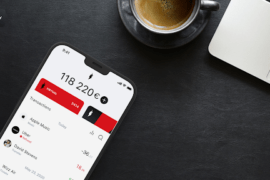
An equity loan or a line of credit secured by the home of the borrower is considered a home equity loan. In the case of equity in their home, borrowers may be able to avail themselves of equity loans or credit lines.
There is equity when the owed amount versus the home’s current value exceeds the loan. For example, a borrower may borrow from the equity in their home, if the value of their home exceeds their outstanding loan balance.
In exchange for making fixed payments over the loan’s life, borrowers get a lump sum to spend upfront. A fixed interest rate is also part of the deal.
Meanwhile, home equity lines of credit (HELOCs) are credit lines that are accessible upon request and limit a borrower’s borrowing to a certain amount. The interest rate on HELOCs is variable, and the payments are usually not fixed.
HELOCs: How do they work?
HELOC or home equity line of credit is a loan secured by your house and taken out against the equity in it. The available credit is replenished as you pay off the outstanding balance – as if you had a credit card.
You can do this as often as necessary and up to the credit limit you established at closing during your draw period (typically a decade). Once the draw period has ended, the repayment period (normally 20 years) begins.
Claim up to $26,000 per W2 Employee
- Billions of dollars in funding available
- Funds are available to U.S. Businesses NOW
- This is not a loan. These tax credits do not need to be repaid
Common HELOC Uses.
The borrower can use the funds, even if the loan is secured by his or her home, for anything related to the home.
The HELOC is a flexible line of credit instead, which can be used to finance everything from new appliances and home improvements to educational expenses and other large purchases. Also, homeowners can take advantage of HELOCs to consolidate debt or to cover cash flow irregularities.
What else you need to know;
- The lender is using the equity in the borrower’s home as collateral for the loan.
- The interest rate on home equity loans for the term of the loan is fixed.
- The interest rate on a home equity line of credit is variable, and therefore so are the minimum monthly payments.
- If interest is paid on HELOCs, borrowers have the option to withdraw the funds.
HELOC Qualifications.
There are several standard qualifications for HELOCs, including:
- No more than 40% of income is owed on the debt
- 620 or better credit score
- Payment history on time
- A history of repaying credit lines on time
- The value of your home must be at least 15%
Several banks are tightening the requirements for HELOCs and other types of financing due to the economic uncertainty surrounding COVID-19. One example would be Bank of America, which has announced that its credit score requirement has been increased from 660 to 720. HELOC applications are no longer accepted by Chase and Wells Fargo.
Wrapping Up
Revolving credit lines (HELOCs) refer to the home equity lines of credit. The borrower may draw on the credit line to the extent of a preset limit, make payments, and then draw on the credit line once more.
In the case of a Home Equity Line of Credit (HELOC), the borrower receives the proceeds of the loan at once, while in the case of a Home Equity Loan, the proceeds are tapped as needed. Until its term ends, the credit line remains open. Based on the credit line’s usage, borrowing amounts can change, which can also affect the borrower’s minimum payments.
Author Bio
Adam Smith is a content writing guru at Contenterist. He is adept in IT as well. He loves to write on different topics. In his free time, he likes to travel and explore different parts of the world.



